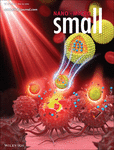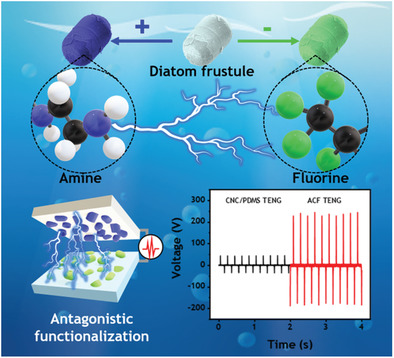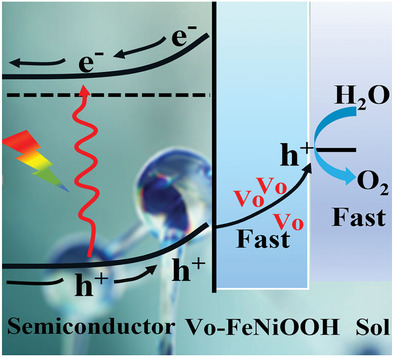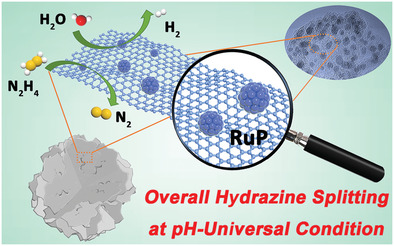Journal list menu
Export Citations
Download PDFs
Cover Picture
Supramolecular Core–Shell Nanoassemblies with Tumor Microenvironment-Triggered Size and Structure Switch for Improved Photothermal Therapy (Small 20/2022)
- First Published: 19 May 2022

Photothermal Therapy
In article number 2200588, Xiaohuan Sun, Jie Han, and co-workers construct size switchable core–shell nanostructures regulated by the tumor acidic microenvironment for benefits of both tumor accumulation and penetration. Superior photothermal performance of the core–shell nanostructures is achieved at the tumor site. The nanoplatform is demonstrated for improved antitumor efficacy.
Inside Front Cover
Structured Ultra-Flyweight Aerogels by Interfacial Complexation: Self-Assembly Enabling Multiscale Designs (Small 20/2022)
- First Published: 19 May 2022
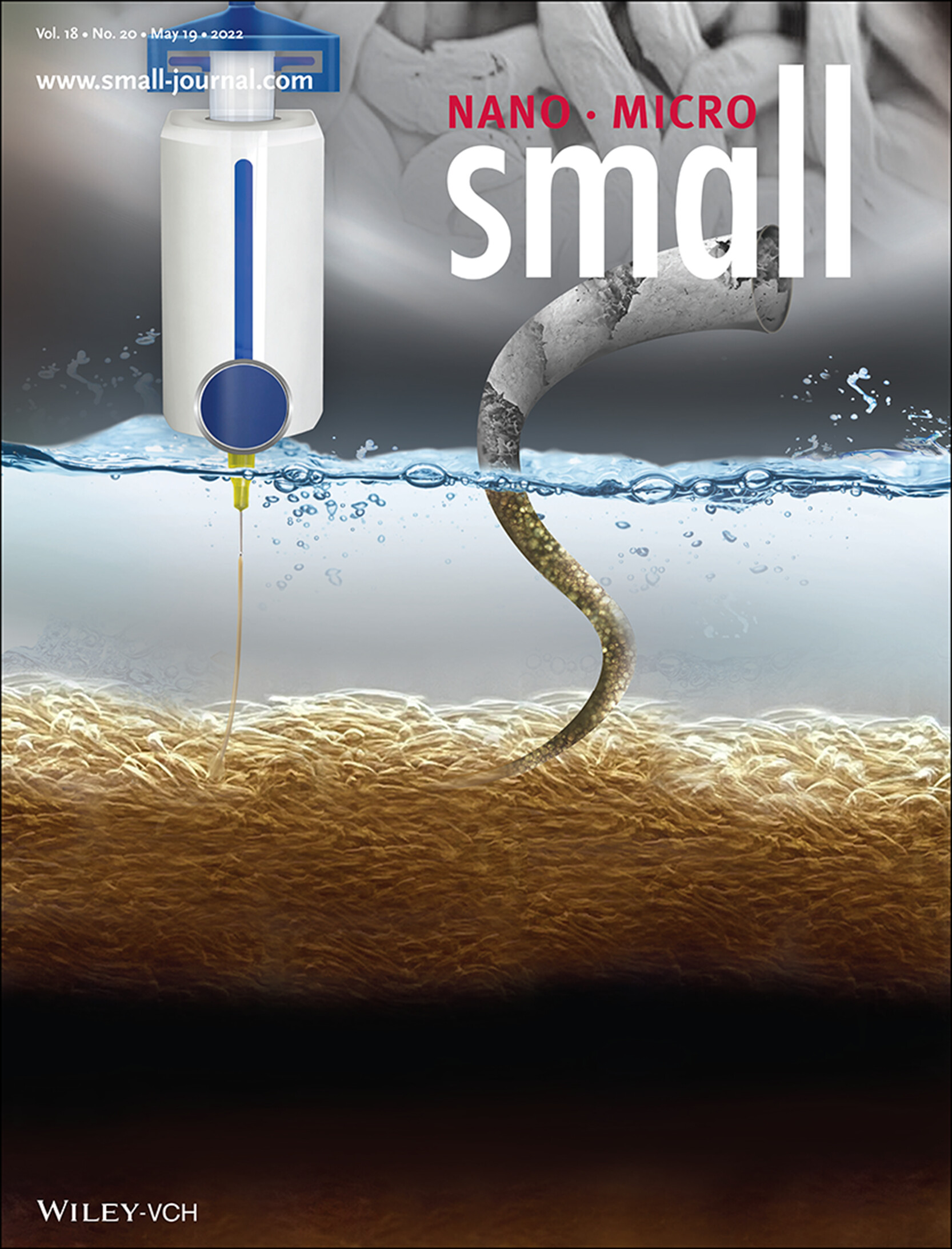
Multiscale Design
In article number 2200220, Milad Kamkar, Orlando J. Rojas, and co-workers devise types of biphasic soft materials featuring unique morphologies, e.g., continuous, multilayer, interpenetrated, and tubular structures. This is achieved by interfacial co-assembly of nanomaterials and surfactants. These soft materials allow for the fabrication of structurally tunable and stable ultra-flyweight aerogels with unique worm-like morphologies, consisting of micro- and macro-scale porosity.
Inside Back Cover
Large-Area Covalent Organic Polymers Membrane via Sol–Gel Approach for Harvesting the Salinity Gradient Energy (Small 20/2022)
- First Published: 19 May 2022
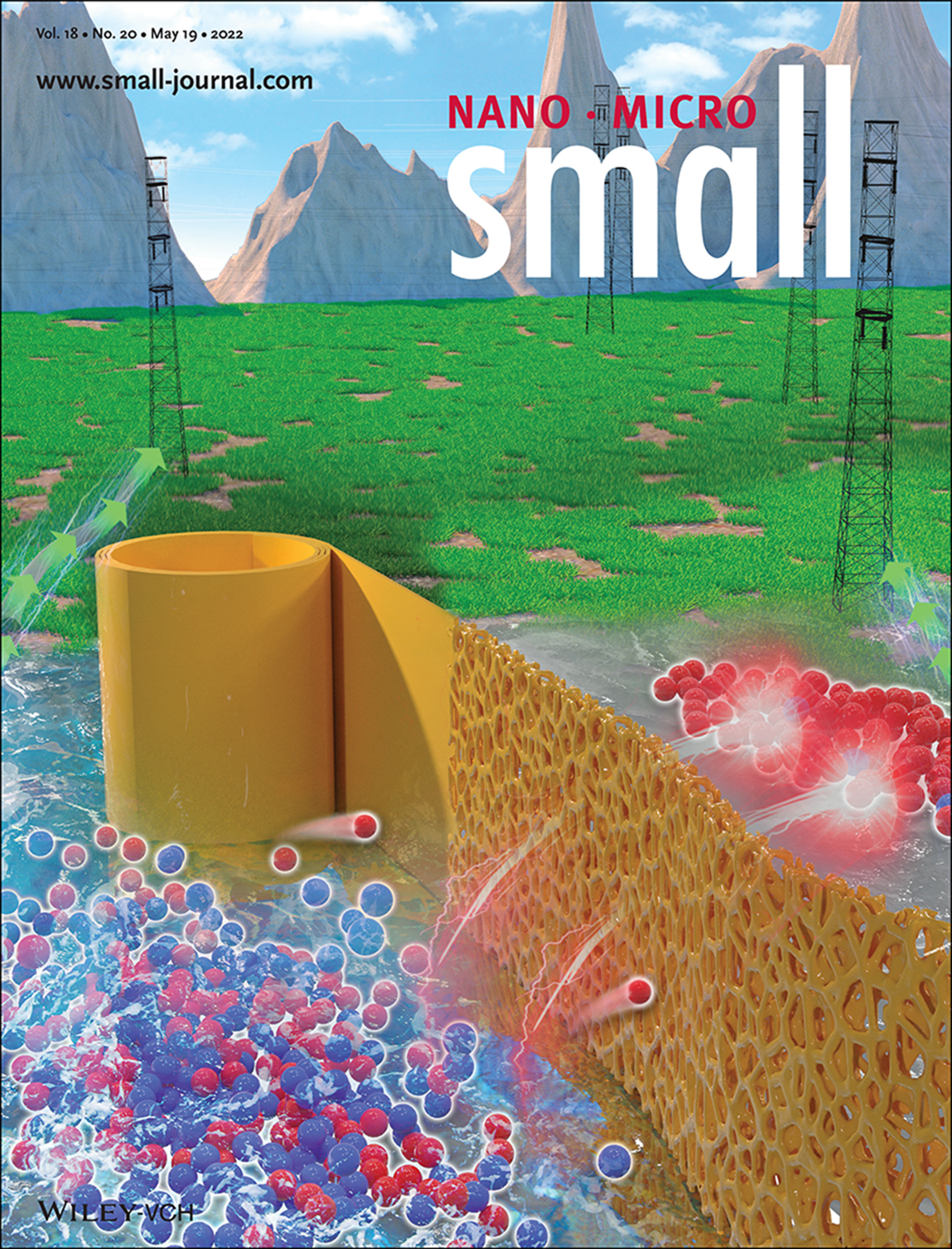
Energy Harvesting
There are salinity gradients at the confluence of the river and sea, which contain tremendous amounts of energy. In article number 2107600, Jin Zhai and co-workers fabricate a covalent organic polymers membrane for harvesting the salinity gradient energy. The membrane has better properties and can be prepared in large areas, which is expected to be applied in the future to real-world situations.
Back Cover
Deep Learning-Assisted Automated Single Cell Electroporation Platform for Effective Genetic Manipulation of Hard-to-Transfect Cells (Small 20/2022)
- First Published: 19 May 2022

Genetic Manipulation
In article number 2107795, Horacio D. Espinosa and co-workers present an automated nanopipette-based single cell electroporation system using arrays of microwells, a deep convolutional neural network for cell nuclei localization, and hardware and software for cell–nanopipette contact detection. The system enables CRISPR/Cas9 gene editing and cell perturbation studies with unprecedented throughput, efficiency, and cell viability. Applications include generation of isogenic cell lines, delivery of plasmids for reporter expression, and Cas9 ribonucleoprotein complexes for gene knockout.
Masthead
Reviews
Layered Cathode Materials: Precursors, Synthesis, Microstructure, Electrochemical Properties, and Battery Performance
- First Published: 26 February 2022
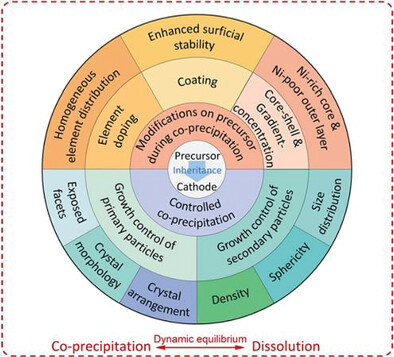
The electrochemical performance of a layered cathode material in practical use largely depends on the precursor, since the former inherits the density and sphericity of the secondary particles as well as the arrangement, orientation, and exposed facets of the primary particles from the latter. Besides, modifications on a precursor can also endow the cathode with improved performance.
Metal–Organic Frameworks (MOFs)-Based Mixed Matrix Membranes (MMMs) for Gas Separation: A Review on Advanced Materials in Harsh Environmental Applications
- First Published: 27 February 2022
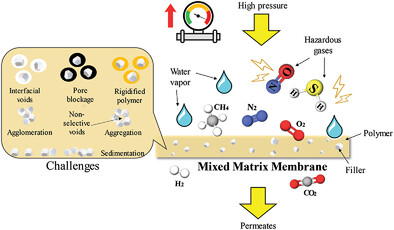
A comprehensive review of metal–organic frameworks (MOFs)-based mixed matrix membranes (MMMs) is presented. A wide range of MOFs materials such as conventional, emerging and advanced materials used to fabricate MMMs for targeted gas separation application are covered. Distinctively, this review elucidates the MMMs that are suitable for industrial usage, especially under harsh operating conditions.
Emerging Two-Dimensional Tellurene and Tellurides for Broadband Photodetectors
- First Published: 04 March 2022
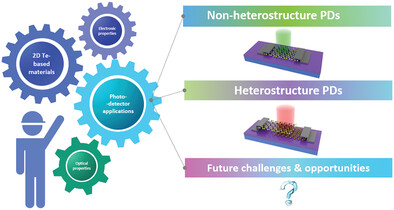
Merits of tunable narrow bandgap, high environmental stability, and lower thermal conductivity have endowed 2D tellurene and tellurides significant potential in optoelectronics. This review gives an intriguing bottom-to-top organization from important electronic and optical properties of such materials and extends to their practical photodetector applications, and some challenges and opportunities for 2D Te-based photodetectors are also concluded.
DNA Logic Circuits for Cancer Theranostics
- First Published: 07 March 2022

Recent progress in cancer theranostics applications of DNA logic circuits is summarized. The strategies are discussed to show how to utilize cancer biomarkers to construct DNA logic circuits. Rich examples of DNA logic circuits in various scenarios are provided and deeply discussed including in vitro detection, cell surface and cytoplasmic biomarker identification, and stimuli-triggered drug release.
Frontispiece
A Programmable Multifunctional 3D Cancer Cell Invasion Micro Platform (Small 20/2022)
- First Published: 19 May 2022
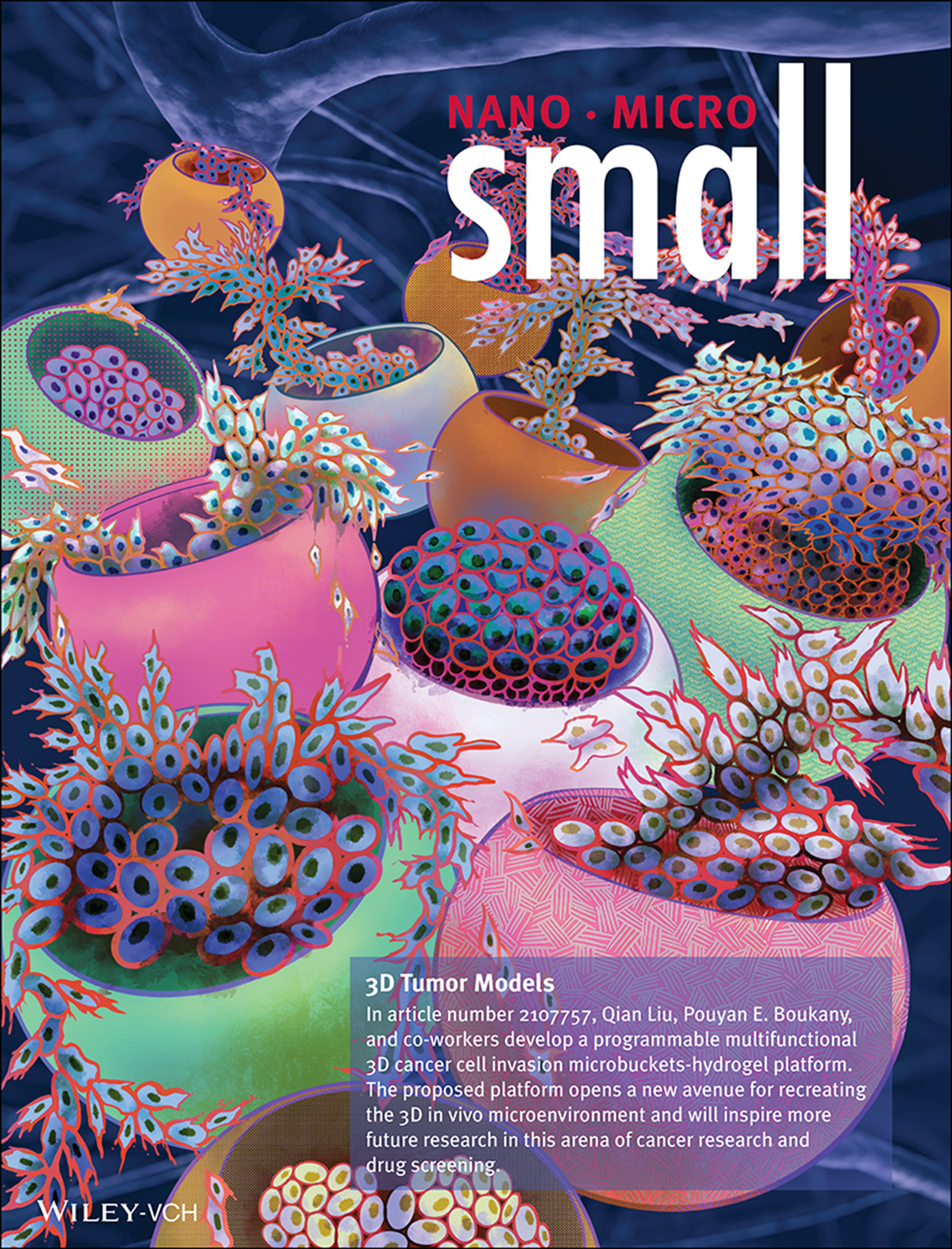
3D Tumor Models
In article number 2107757, Qian Liu, Pouyan E. Boukany, and co-workers develop a programmable multifunctional 3D cancer cell invasion microbuckets-hydrogel platform. The proposed platform opens a new avenue for recreating the 3D in vivo microenvironment and will inspire more future research in this arena of cancer research and drug screening.
Research Articles
A Programmable Multifunctional 3D Cancer Cell Invasion Micro Platform
- First Published: 09 March 2022
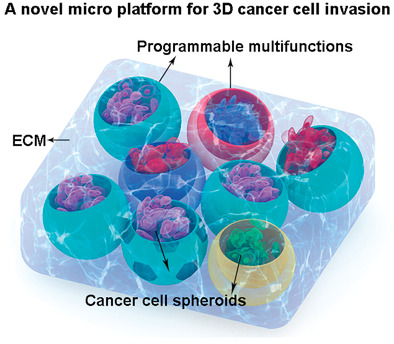
A micro platform is engineered for 3D cancer cell invasion. By integrating various functionalized microbuckets and ECM-like hydrogels in one platform, the 3D invasive migration of cancer cell spheroids is researched by spatial-temporal controlled release of cytokine and adjustment of the cell–matrix interactions. It displays a strategy with the synergy of multiple factors in cancer cell invasion that promotes the mimicking of the real tumor microenvironment.
Supramolecular Core–Shell Nanoassemblies with Tumor Microenvironment-Triggered Size and Structure Switch for Improved Photothermal Therapy
- First Published: 11 March 2022
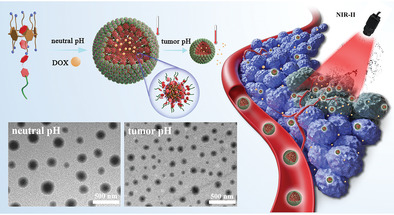
Size switchable core–shell nanostructures induced by host–guest interaction between water-soluble pillar[5]arene and polyethylene glycol-modified aniline tetramer are constructed for benefits of both tumor accumulation and penetration. Moreover, the molecular and self-assembly manipulation regulated extending of п conjugate dramatically enhances its photothermal conversion efficiency (60.2%). The as-designed intelligent nanoplatform is demonstrated for improved antitumor efficacy via photothermal therapy.
Structured Ultra-Flyweight Aerogels by Interfacial Complexation: Self-Assembly Enabling Multiscale Designs
- First Published: 13 March 2022
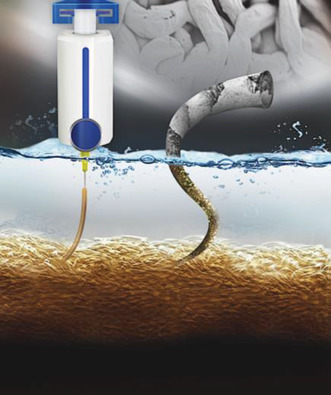
New types of two-phase soft materials featuring unique morphologies are fabricated by interfacial co-assembly of nanomaterials and surfactants. These soft materials comprise continuous, multilayer, interpenetrated, and tubular structures produced by liquid streaming. The latter allows fabrication of structurally tunable and stable ultra-flyweight worm-like aerogels that display micro- and macroscale porosity.
Large-Area Covalent Organic Polymers Membrane via Sol–Gel Approach for Harvesting the Salinity Gradient Energy
- First Published: 24 March 2022
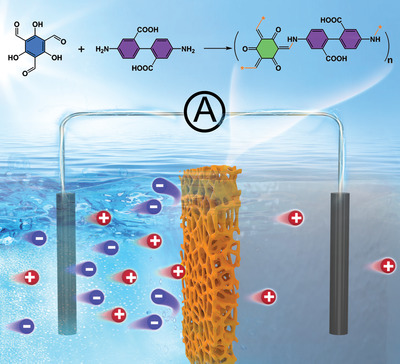
A covalent organic polymers membrane is fabricated for harvesting the salinity gradient energy. The membrane fabricated via a facile sol–gel approach can be infinitely enlarged in theory. The membrane possesses high mechanical strength and sufficient stability. The maximum output power density of the membrane is up to 6.21 W m−2 and far above the commercialization benchmark (5 W m−2).
Deep Learning-Assisted Automated Single Cell Electroporation Platform for Effective Genetic Manipulation of Hard-to-Transfect Cells
- First Published: 21 March 2022
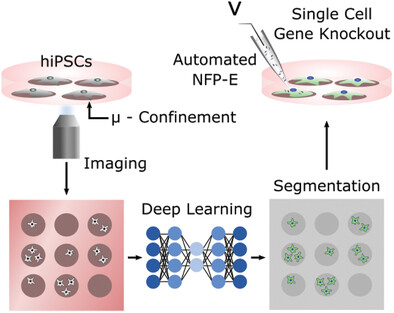
In this article, the authors present a deep learning-assisted nanofountain probe electroporation system in combination with microconfinement arrays to trap and transfect single cells. Using the combined platform, the authors demonstrate automated intracellular delivery and genetic perturbation in hard-to-transfect cells followed by temporal tracking of the perturbed cell colonies.
Mechanisms of Interface Cleaning in Heterostructures Made from Polymer-Contaminated Graphene
- First Published: 07 April 2022
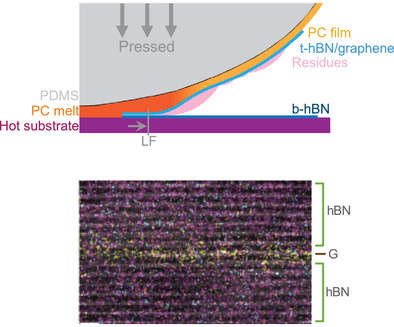
A systematic framework to study the interface cleaning problem of heterostructures made from polymer-contaminated graphene is presented. By studying this problem from an energy-viewpoint, the mechanisms behind the interface cleaning of such heterostructures are revealed. The proposed framework yields a reproducible approach for fabricating clean heterostructures from polymer-contaminated graphene that have record-large dimensions and state-of-the-art electronic properties.
A Confinement-Driven Nucleation Mechanism of Metal Oxide Nanoparticles Obtained via Thermal Decomposition in Organic Media
- First Published: 15 April 2022

A nucleation mechanism of iron oxide nanoparticles synthesized by a thermal decomposition method is presented: instead of a homogeneous nucleation within the solvent, the nucleation occurs within vesicle-like-nanoreactors. The different steps are: 1) melting and coalescence of iron stearate particles into droplet-shaped nanoreactors; 2) formation of a hitherto unobserved iron stearate crystalline phase; 3) formation of iron oxide nuclei inside the nanoreactors.
Pachyrhynchus Weevils Use 3D Photonic Crystals with Varying Degrees of Order to Create Diverse and Brilliant Displays
- First Published: 15 April 2022
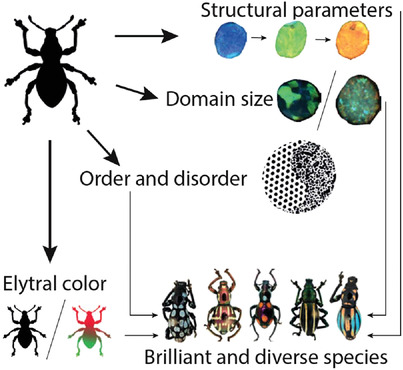
3D photonic materials of varying order form the basis of the beautiful displays of many insects. This study characterises the ultrastructures and optical properties of the elytral scales found in a wide array of different Easter Egg weevils. The various mechanisms with which the species changes its colorful appearance are highlighted and linked to the species-level phylogeny.
Antagonistically Functionalized Diatom Biosilica for Bio-Triboelectric Generators
- First Published: 15 April 2022
Crystalline Covalent Triazine Frameworks with Fibrous Morphology via a Low-Temperature Polycondensation of Planar Monomer
- First Published: 14 April 2022
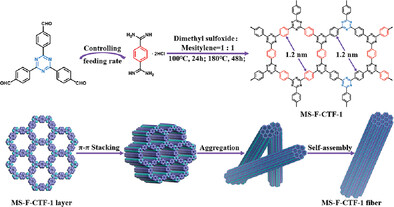
A facile strategy to fabricate morphology controllable covalent triazine frameworks (CTFs) by a mild polycondensation reaction in mixed solvents is reported. The resultant crystalline CTFs exhibits fibrous morphology, which endows them with high charge transfer mobility and efficient separation of the photogenerated electron-hole pairs. Thus, the photocatalytic hydrogen evolution performance of fibrillar CTFs is about twice that of block structure.
Photosensitized Peroxidase Mimicry at the Hierarchical 0D/2D Heterojunction-Like Quasi Metal-Organic Framework Interface for Boosting Biocatalytic Disinfection
- First Published: 18 April 2022
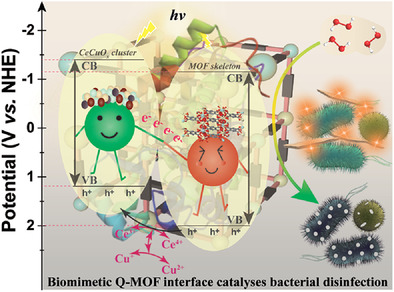
A quasi-metal-organic framework (MOF) ranked out from MOF-derived peroxidase (POD) mimics for its preferential structure-activity correlation is presented. The hierarchical heterojunction-like interface, featuring homogeneous deployment of partial metal node-derived 0D nanoclusters sites on the scaffolding 2D decarboxylated MOF skeleton, renders the bimetallic quasi-MOFCe0.5 with surprisingly enhanced photoreactive POD-like activity. Such a quasi-MOF marriage witnesses effective and safe antibacterial applications in vitro and in vivo.
Graphene Quantum Dots Pinned on Nanosheets-Assembled NiCo-LDH Hollow Micro-Tunnels: Toward High-Performance Pouch-Type Supercapacitor via the Regulated Electron Localization
- First Published: 18 April 2022
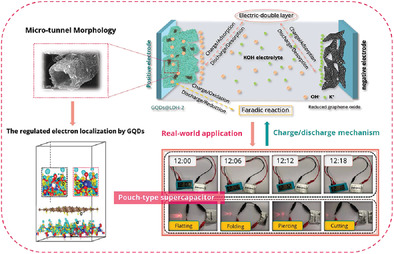
A supercapacitor electrode material, this is, nanosheet-assembled nickel-cobalt layered double hydroxide hollow micro-tunnels strongly coupled with higher-Fermi-level graphene quantum dots (GQDs), is reported and meanwhile, the first utilization of GQDs as efficient surface-modifiers to tune the electron localization is demonstrated. The as-constructed hybrid device expresses a typical energy storage mechanism and drives commercial electronics under various situations, showcasing great promise in real-world applications.
Wafer-Scale Demonstration of MBC-FET and C-FET Arrays Based on Two-Dimensional Semiconductors
- First Published: 18 April 2022
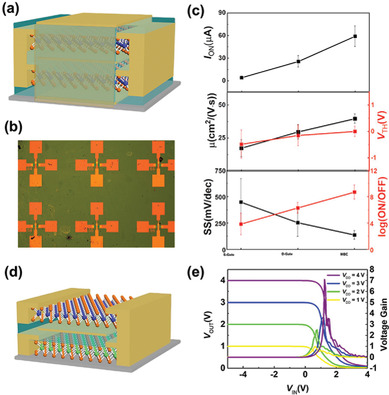
A large-scale multi-bridge channel field-effect transistor (MBC-FET) and complementary field-effect transistor (C-FET) arrays are demonstrated based on wafer-scale 2D semiconductors. Compared with conventional MoS2 FETs, the MBC-FET structure exhibits improved electrical performance. By 3D integration of n-type MoS2 and p-type MoTe2, a C-FET is built with a voltage gain of 7 V/V when VDD = 4 V.
Electrostatic Charge-Mediated Apoptotic Vesicle Biodistribution Attenuates Sepsis by Switching Neutrophil NETosis to Apoptosis
- First Published: 15 April 2022
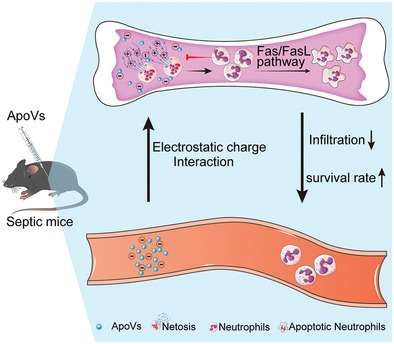
Apoptotic vesicles (ApoVs) are recruited by neutrophil extracellular traps (NETs) via electrostatic charge interaction in the bone marrow. ApoVs can mediate the cell death pattern switch of neutrophils from NETosis to apoptosis via the Fas/Fas ligand pathway, then inhibit the migration of neutrophils from bone marrow to distal organs, alleviating the organ injury, and improving the survival of septic mice.
Transport Modulation Through Electronegativity Gating in Multiple Nitrogenous Circuits
- First Published: 15 April 2022
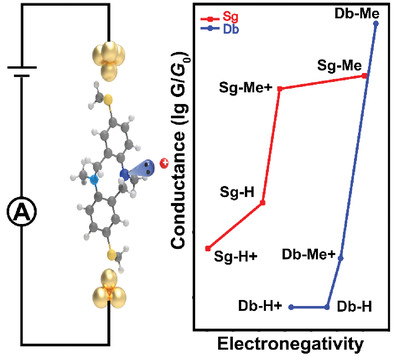
The modulation of the electron transport in multiple conducting channels influenced by the electronegativity variation is evaluated by electronegativity tuning on single- (Sg series) and dual-channel (Db series) nitrogenous compounds. This work explores the electron transport mechanism in nitrogenous molecules with different channels and electronegativity, paving the way for designing integrated molecular devices for electronics and nanotechnology.
Lithium Bonds Enable Small Biomass Molecule-Based Ionoelastomers with Multiple Functions for Soft Intelligent Electronics
- First Published: 15 April 2022
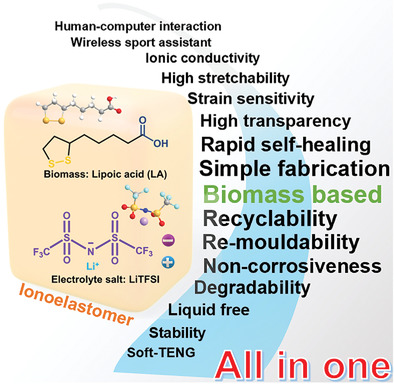
Ionoelastomers (IEs) are successfully developed by melt polymerization using small biomass molecule lipoic acid (LA) with the assistance of LiTFSI. The Li-bonds are found to solve the severe depolymerization of LA and enable the development of recyclable and degradable IE with dry dynamic polymer networks and multi-functionality. Finally, the applications of IE in soft intelligent electronics are described.
High-Efficiency Poly(Vinylidene Fluoride-Co-Hexafluoropropylene) Loaded 3D Marigold Flower-Like Bismuth Tungstate Triboelectric Films for Mechanical Energy Harvesting and Sensing Applications
- First Published: 14 April 2022
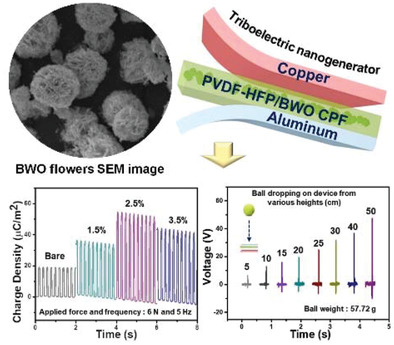
A ferroelectric/dielectric bismuth tungstate (BWO) is synthesized and used as a filler material in the fabrication of a triboelectric nanogenerator (TENG). The BWO filler concentrations play a significant role in enhancing the ferroelectric property of the composite film, resulting in an increased electrical output. The TENG is employed as a self-powered sensor, harvesting mechanical energy from human activities, and powering portable electronics.
Equilibrated PtIr/IrOx Atomic Heterojunctions on Ultrafine 1D Nanowires Enable Superior Dual-Electrocatalysis for Overall Water Splitting
- First Published: 14 April 2022
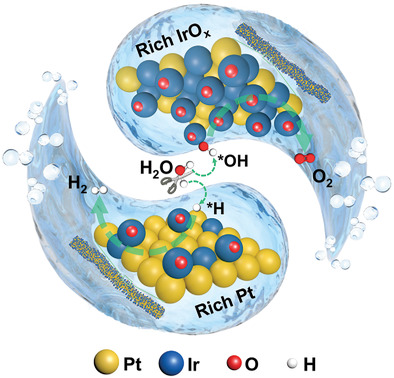
Ultrafine PtIr/IrOx hybrid nanowires with equilibrated Pt/IrOx atomic heterojunctions are elaborately synthesized to serve as high-performance dual-function electrocatalysts for overall water splitting in alkaline conditions. Atomically coupled Pt–IrOx dual-sites can mutually arouse electronic-modulation for substantially accelerating the hydrogen evolution reaction and oxygen evolution reaction, respectively.
A Three-In-One Assembled Nanoparticle Containing Peptide–Radio-Sensitizer Conjugate and TLR7/8 Agonist Can Initiate the Cancer-Immunity Cycle to Trigger Antitumor Immune Response
- First Published: 17 April 2022
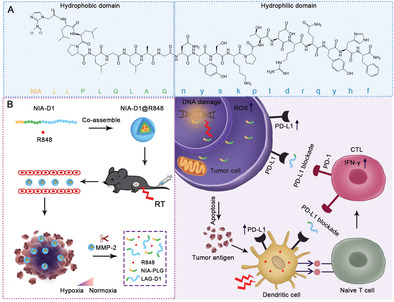
The authors design and construct a three-in-one assembled carrier-free nanoparticle NIA-D1@R848 containing peptide–radio-sensitizer conjugate and TLR7/8 agonist that can simultaneously execute three obstacles of the cancer-immunity cycle induced by radiation, which provides a promising strategy and good example to combine radiotherapy and immunotherapy by targeting tumor cells, dendritic cells, and T cells.
Two-Dimensional Transition Metal Dichalcogenides Trigger Trained Immunity in Human Macrophages through Epigenetic and Metabolic Pathways
- First Published: 18 April 2022
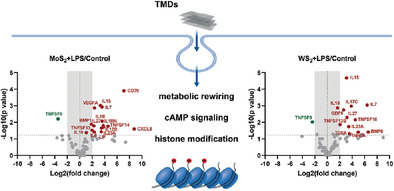
The present study demonstrates that 2D transition metal dichalcogenides (TMDs) elicit trained immunity in primary human macrophages. Evidence is provided for a role of epigenetic and metabolic rewiring in macrophages exposed to TMDs, and MoS2 is also shown to act directly on the cAMP signaling pathway. Thus, biocompatible 2D TMDs are capable of evoking “memory” responses.
Significantly Promoting the Photogenerated Charge Separation by Introducing an Oxygen Vacancy Regulation Strategy on the FeNiOOH Co-Catalyst
- First Published: 17 April 2022
Phase-Selective Synthesis of Ruthenium Phosphide in Hybrid Structure Enables Efficient Hybrid Water Electrolysis Under pH-Universal Conditions
- First Published: 17 April 2022
Magnetization Precession at Sub-Terahertz Frequencies in Polycrystalline Cu2Sb-Type (Mn–Cr)AlGe Ultrathin Films
- First Published: 15 April 2022

A ferromagnetic metal nanolayer with large perpendicular magnetic anisotropy (PMA) energy and small magnetic damping constant are crucial for high-speed spintronic devices. In this study, sub-terahertz magnetization dynamics with large PMA energy in Cu2Sb-type (Mn–Cr)AlGe films are investigated by an all-optical method. The precession frequency of 0.164 THz with a small effective magnetic damping constant of 0.012 is obtained.
Rational Regulation of the Molecular Aggregation Enables A Facile Blade-Coating Process of Large-area All-Polymer Solar Cells with Record Efficiency
- First Published: 17 April 2022
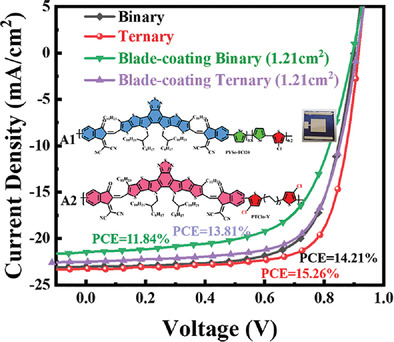
A series of acceptors PYSe-Clx (x = 0, 10, 20, and 30) is developed, in which the highest power conversion efficiency (PCE) of 14.21% is achieved for the PYSe-Cl20-based all-polymer solar cells (all-PSCs). With the addition of acceptor PTClo-Y, the ternary devices reach a PCE of 15.26%. Notable PCEs of 11.84% and 13.81% are achieved for both large-area (1.21 cm2) devices based on binary and ternary all-PSCs by blade-coating, respectively.
Mechanistic Study of Interfacial Modification for Stable Zn Anode Based on a Thin Separator
- First Published: 15 April 2022
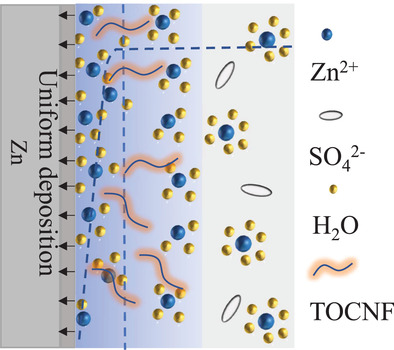
In this study, reaction kinetics, transport rate, and modulus are identified as critical factors that affect the Zn anode stability. Further, the TEMPO-oxidized cellulose nanofiber (TOCNF) coating layer with high mechanical strength and abundant carboxylate groups is demonstrated to enhance the mass transfer kinetics and altered the Zn2+ distribution, stabilizing the Zn anode.
Steering the Pathway of Plasmon-Enhanced Photoelectrochemical CO2 Reduction by Bridging Si and Au Nanoparticles through a TiO2 Interlayer
- First Published: 18 April 2022
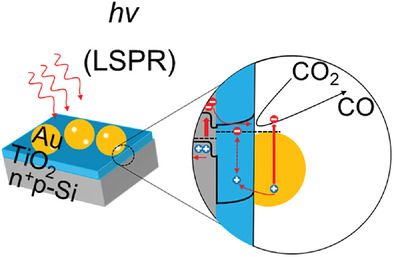
The TiO2 interlayer bridging n+p-Si and Au nanoparticles greatly boosts the photoelectrochemical (PEC) activity and selectivity of Si photocathode for CO production, which can be attributed to the reduced carrier recombination at the Au/n+p-Si interface, enhanced capacity for the CO2 adsorption and activation, and effective utilization of the hot electrons generated in Au nanoparticles in PEC CO2 reduction.
Calcium Based All-Organic Dual-Ion Batteries with Stable Low Temperature Operability
- First Published: 17 April 2022

To obtain secondary batteries operable at low temperatures, an all-organic dual-ion battery with polytriphenylamine as the cathode, perylene diimid-ethylene diamine as the anode and acetonitrile containing calcium perchlorate as the electrolyte is fabricated, which exhibit excellent electrochemical performances in terms of rate capability and cycling stability with the temperatures ranging from 25 to −50 °C.
Hierarchical Core–Shell Co2N/CoP Embedded in N, P-doped Carbon Nanotubes as Efficient Oxygen Reduction Reaction Catalysts for Zn-air Batteries
- First Published: 18 April 2022
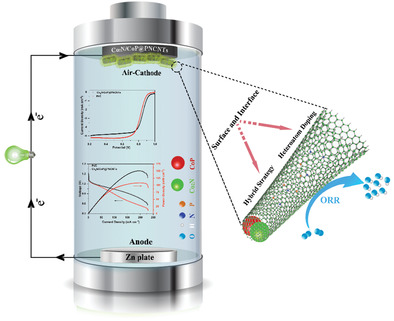
Inspired by surface and interface nanoengineering strategy, core–shell Co2N/CoP@PNCNTs has been designed to present superior oxygen reaction reduction (ORR) and Zn-air batteries performances, owing to the synergistic effect of Co2N/CoP as the core and N, P doped carbon nanotubes as the shell, with large specific surface area, excellent electricity conductivity, enriched electronic structure contributing to lower energy barrier, and stable shell protection.
All Transition Metal Selenide Composed High-Energy Solid-State Hybrid Supercapacitor
- First Published: 20 April 2022

The implication of the present work is the utilization of highly conductive, battery-type metal selenides as positive and negative electrodes for hybrid supercapacitors (HSCs). The HSCs comprising NiSe@Cu2Se (NiCuSe) as a positive electrode and FeSe as a negative electrode deliver a high specific energy density of 87.6 Wh kg−1 at a specific power density of 914.3 W kg−1.
High Performance, Stable, and Flexible Piezoelectric Nanogenerator Based on GaN:Mg Nanowires Directly Grown on Tungsten Foil
- First Published: 23 April 2022
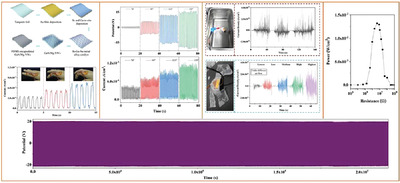
Semi-insulating Mg-doped GaN nanowires are directly grown on 30-μm-thick tungsten foil. The self-powered and super flexible piezoelectric nanogenerator (f-PNG) can be used for several conditions including its role as a health-monitoring sensor when mounted on joints to monitor their repeated bending and relaxation. During the stability test for 60 h, the f-PNG did not show any degradation in its performance.
Atomically Dispersed NiN3 Sites on Highly Defective Micro-Mesoporous Carbon for Superior CO2 Electroreduction
- First Published: 20 April 2022
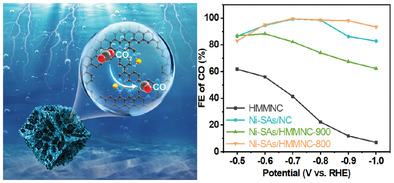
This work develops a single-atom Ni catalyst with abundant isolated atomic NiN3 sites and adjacent rich micro-mesoporous defects for catalyzing CO2-to-CO electroreduction. Benefiting from the cooperation of atomically dispersed NiN3 coordination species as active sites for catalytic reactions, and the adjacent enhanced micro-mesoporous defects for greatly improving mass/charge-transfer capability and active-site accessibility, the optimal Ni-SAs/HMMNC-800 catalyst exhibits superior electrocatalytic CO2RR activity and selectivity with a ultrahigh FECO (≈99.5%), and high durability under long-period CO2RR operation.
Cyclodextrin-Derived ROS-Generating Nanomedicine with pH-Modulated Degradability to Enhance Tumor Ferroptosis Therapy and Chemotherapy
- First Published: 22 April 2022
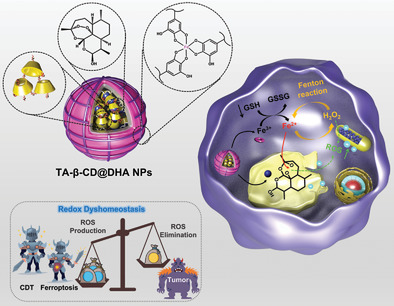
A reactive oxygen species (ROS)-generating nanomedicine based on acetalated β-cyclodextrin loaded with dihydroartemisinin and coated with an iron-containing polyphenol network can move the active redox reaction in cancer cells to the side of the excessive ROS production, so as to realize a redox dyshomeostasis strategy against malignant tumors.
2D Materials and Primary Human Dendritic Cells: A Comparative Cytotoxicity Study
- First Published: 21 April 2022
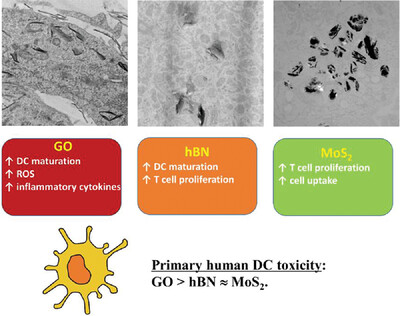
2D materials hexagonal boron nitride (hBN), graphene oxide (GO) and MoS2 are taken up by primary human dendritic cells (DC) without affecting their viability. hBN and GO increase DC maturation, while GO increases release of reactive oxygen species and pro-inflammatory cytokines. hBN and MoS2 increase T cell proliferation. The overall cytotoxicity follows this trend: GO > hBN ≈ MoS2.
Building 2D/2D CdS/MOLs Heterojunctions for Efficient Photocatalytic Hydrogen Evolution
- First Published: 21 April 2022
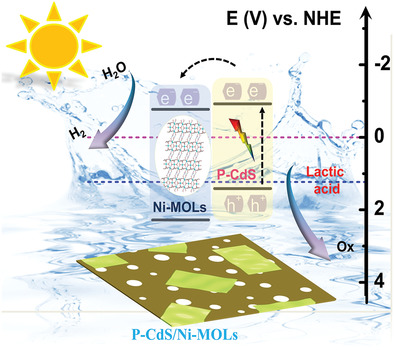
The ultrathin structure and large specific surface area of the P-CdS/Ni-MOL composites are of great benefit for exposing more active sites and expanding contact surface area. In such a way, the recombination of photoinduced electrons/holes pairs can be efficiently inhibited. The synergistic effect of the intimate contact between P-CdS and Ni-MOLs can significantly enhance the photocatalytic H2 evolution performances.
Deep Tumor Penetrating Gold Nano-Adjuvant for NIR-II-Triggered In Situ Tumor Vaccination
- First Published: 21 April 2022
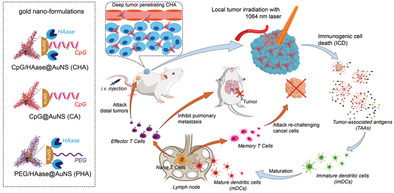
A nano-adjuvant system for in-situ tumor vaccination is fabricated: deep tumor penetrating gold nanostars decorated with hyaluronidases and immunostimulatory oligodeoxynucleotides. Upon tumor irradiation with the near-infrared light at the second window, the nano-adjuvant significantly inhibits the tumor growth, generates an obvious adaptive immunity against the re-challenged cancers, boosts the abscopal effect and completely inhibits the pulmonary metastases.
Gas-Phase Alkali Metal-Assisted MOCVD Growth of 2D Transition Metal Dichalcogenides for Large-Scale Precise Nucleation Control
- First Published: 21 April 2022
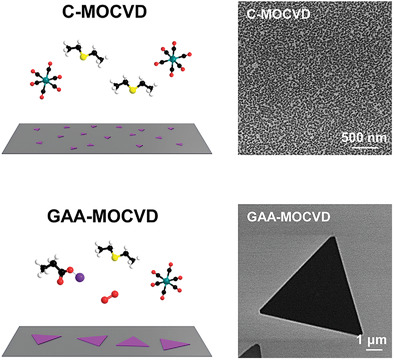
The gas-phase alkali metal-assisted MOCVD (GAA-MOCVD) for 2D semiconductors with advanced nucleation control realizes the grain size enhancement and generation of MoS2 continuous films with large-scale spatial homogeneity. In addition, this method enables the grain size enhancement to be maximized as a result of precise and controllable feeding of gas-phase precursors.




